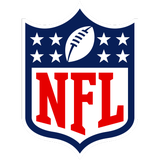In the words of The Rock, Finally… The Sleeper King has come back to Yahoo Fantasy.
Did y’all know it’s been SIX years since I last wrote for this great site?
When management approached me about a possible reunion, I was like your buddy who was too busy to draft, autopicking the best-available player, nothing to think about, just an instantaneous decision. Similarly I didn’t ask many questions, I just instantaneously knew I wanted back in.
Advertisement
Look, I’ve been playing fantasy sports for nearly 30 years and all the way back when Backstreet Boys was dominating the airwaves in the mid-90’s, Yahoo was my first platform and I’ve stuck with it ever since.
[It’s not too late — join or create a Yahoo Fantasy Football league for the 2025 NFL season]
So yeah, to be back and writing and creating content for a company that hugely shaped my personal and professional life is a big-time thrill.
For those of you unfamiliar with my work, a big “Forest Gump hand wave gif” to you. My name is James Koh and I’m an award-winning fantasy analyst that’s worked at NFL Network, DIRECTV’s Red Zone, Amazon Prime Sports and a bunch of other places.
Advertisement
My role every Wednesday during the season will be to parse through which advanced stats you need to be paying attention to. And then on Fridays, I’ll be giving you my favorite matchup-based plays.
Alright let’s get to the reason y’all are here and talk fantasy football. I promise you my preambles won’t be nearly as long moving forward!
Converted air yards
If you’re a competitive fantasy football player (and let’s be real, you wouldn’t be reading this column if you weren’t) you know about air yards.
But one of my favorite ways of identifying potential breakouts or sleepers is by looking at what percentage of those air yards are converted into actual receiving yards.
Advertisement
Let’s say Ja’Marr Chase sees three targets and each one is 50 yards downfield. That would be 150 air yards. But let’s say he only caught one of those passes and was tackled immediately. That would be a 50 yard gain and thus a 30 percent conversion of air yards into receiving yards (50 out of 150).
Theoretically this number can be above 100 percent, for example let’s say a receiver catches a bubble screen just past the line of scrimmage (1 air yard), then he runs for 10 yards. That would be a 1,000 percent conversion (10/1).
[Upgrade to Fantasy Plus and gain your edge from draft day to the playoffs]
So what’s league average you ask? Well, among all WR’s with at least 25 targets, the average conversion rate was 81 percent, meaning for every 100 air yards, your average receiver would take home 81 receiving yards.
Advertisement
When searching for those coveted sleepers and/or undervalued players, you want to find guys who are not only projected to see a huge chunk of air yards but are also nursing depressed values because they suffered from low air yard conversions.
For the uninitiated, 10 targets per game is a ton and considered elite volume. The other side of the volume coin is air yards. Consider any player taking home 100 air yards per game to be seeing a ton of air yard volume.
*All air yard stats provided by FTN Fantasy.
George Pickens, Cowboys
Dak Prescott’s new X receiver actually averaged the fourth most air yards per game last year while in Pittsburgh (100.8 air yards per game) but only saw a 63.5% conversion rate.
Advertisement
Considering Dak is a SIGNIFICANT upgrade over what the Steelers threw out there last year, expect that conversion rate to be closer to 90% this season with his overall volume also seeing a bump.
The Micah Parsons trade makes the Cowboys one of the worst defenses in the NFL and the running game leaves a lot to be desired.
Dallas had 637 pass attempts last year (fourth most), expect similar volume this season, meaning Pickens should see a huge lift in targets, air yards and air yard conversion.
Remember that Michael Gallup in a similar role once posted a 1,200 yard season. That seems like a fair projection for Pickens honestly.
Advertisement
Marvin Harrison Jr., Cardinals
I’m a bit torn on this one as Arizona inexplicably did NOTHING to improve the pass game this offseason. Jonathan Gannon is still the head coach, Drew Petzing is still the offensive coordinator and the team did nothing of significance to alleviate coverage away from Harrison.
That being said Harrison’s 56.5% air yard conversion rate was the fifth lowest among the top 25 air yard receivers last year.
If he develops as a player in his sophomore campaign and if there is improved chemistry between Harrison and Kyler Murray, MHJ won’t even have to rely on Petzing to modernize his archaic 90’s style passing attack.
Advertisement
Calvin Ridley, Titans
If you’re looking for the poster child of why air yards matter, you don’t need to go any further than Tennessee.
On just 64 receptions, Ridley was somehow able to collect a thousand-yard season.
Averaging a league-leading 110 air yards per game, his 53.6% air yard conversion rate was the third worst among the 25 receivers who saw at least 80 air yards per game.
No big surprise there as the Mayo King, Will Levis, was so scattershot, Anthony Richardson thought he was out of control.
With Cam Ward back there now, expect Ridley to continue to see plenty of air yards, only this time, he should see a lot more catchable deep shots.
Advertisement
If Ridley stays healthy, I would be shocked if he doesn’t finish with 1,100+ yards this season.
Rome Odunze, Bears
There isn’t a player I’m more confident in breaking out than Odunze. He was top 25 in air yards per game but at 52.5% he had the second lowest air yard conversion rate among that group (only Amari Cooper, of all players, was lower).
With Ben Johnson in charge, it’s not hard to imagine Odunze taking on some Jameson Williams routes.
Think about how well schemed up some of those plays were for Williams, who averaged an absurd 17.3 yards per reception. Oh by the way, Jamo saw a 91.7% conversion rate.
Advertisement
Considering Odunze is a better prospect than Willams, don’t be surprised if he ends up being the leading receiver in Chicago.
A 1,300-yard, 10-touchdown ceiling is absolutely feasible.
Xavier Legette
Of the 39 receivers who saw at least 1,000 total air yards, Legette’s 48.3% air yard conversion rate was the second worst (again, only Cooper was worse).
Part of it was Bryce Young, part of it was Legette not converting in contested catch situations.
But tight window receptions are fickle and going back to his college tape, I thought Legette was one of the better contested-catch receivers in the 2024 class.
Advertisement
And remember, Legette was a YAC MONSTER at South Carolina. I don’t think we saw nearly enough of that last year because he was forced to play X receiver after the Diontae Johnson trade. As much as I like Legette, he’s not an outside X. He’s a flanker/slot that should be running slants and deep crossers to get him in open space, allowing him to use his freakish size/speed combination to wreak havoc on defenses a la prime Deebo Samuel Sr..
The addition of Tetairoa McMillan, a classic throwback X receiver, will free up XL to do what he does best and that is going out there and being an athlete. I’m actually excited to see what Dave Canales, one of the best offensive coaches in the NFL, draws up for this 221-pound freakazoid with 4.39 speed.
This news was originally published on this post .







Be the first to leave a comment